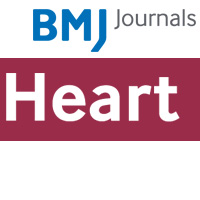Auteurs
Zeitouni M, Sulman D, Silvain J, Kerneis M, Guedeney P, Barthelemy O, Brugier D, Sabouret P, Procopi N, Collet JP, Montalescot G.
Abstract
Aims
To determine if the changes in the European Society Cardiology/European Atherosclerotic Society (ESC/EAS) guidelines improved the identification for primary prevention therapy in young adults at risk of a premature myocardial infarction.
Methods
Patients admitted for a first ST-segment elevation myocardial infarction (STEMI) in the ePARIS registry (n=2757) between 2010 and 2018 were classified by age: <55, 55-65 and >65 years old. Using Systematic Coronary Risk Estimation 2, we evaluated whether patients would have been detected and treated with primary prevention statins before their first STEMI based on the 2021 EAS/ESC guidelines versus 2019 and 2016 guidelines. Eligibility for intensive proprotein convertase subtilisin/kexin type 9 (PCSK9i) in secondary prevention was also assessed.
Results
Following 2021 ESC guidelines, 62.5% of individuals aged <55 years old would have been eligible for statins before their first STEMI, similarly to older age categories. In comparison, only 17% and 18% of young individuals would have been eligible for primary prevention statins prior to their first STEMI with 2016 and 2019 guidelines, compared with group 55-65 years (41% and 35%) and >65 years old (19% and 72%), p<0.01. After their first STEMI, 25% of patients <55 years would be eligible for PCSK9i, compared with 23.2% and 15% in patients aged 55-65 years and >65 years.
Conclusions
The 2021 ESC guidelines allowed a much better detection of young individuals before their first STEMI than prior ESC guidelines. In secondary prevention, most of young individuals did not reach low-density lipoprotein cholesterol levels recommended, but only one quarter would be eligible for PCSK9i.



